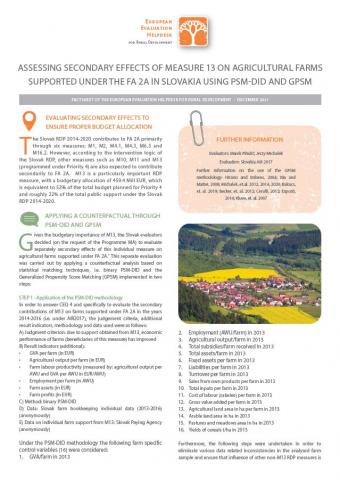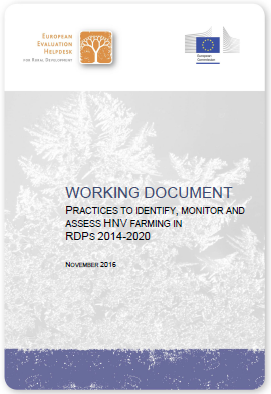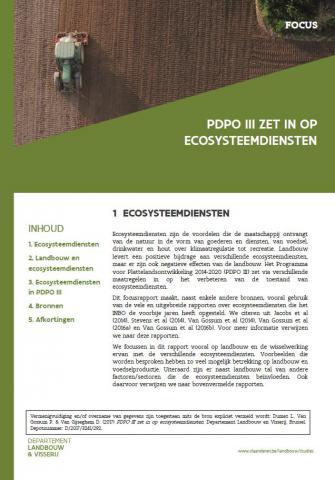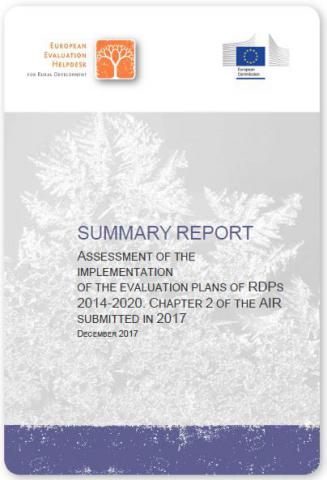
This factsheet focuses on the assessment of pesticide utilisation load in Estonia.

This factsheet focuses on the assessment of pesticide utilisation load in Estonia.

Given the budgetary importance of M13, the Slovak evaluators decided (on the request of the Programme MA) to evaluate separately secondary effects of this individual measure on agricultural farms supported under FA 2A.This separate evaluation was carried out by applying a counterfactual analysis based on statistical matching techniques, i.e. binary PSM-DID and the Generalized Propensity Score Matching (GPSM) and is discussed in this Factsheet.

In order to explore the Member States’s approaches on HNV farming in the new programming period the European Evaluation Heldpesk for Rural Development has (1) carried out an HNV survey in May-July 2016 and (2) organised an HNV Good Practice Workshop in June 2016, which provided a platform for representatives of DG Agri, Member States and HNV practitioners to discuss examples of good practices in identifying, monitoring and assessing HNV farming. This Working Document highlights the outcomes of this survey and the conclusions from the Good Practice Workshop organised in Bonn, Germany.

This report focuses on ecosystem services and the benefits that people and society receive from nature in the form of goods and services, from food, drinking water and wood to climate regulation to recreation. Agriculture makes a positive contribution to various ecosystem services, but there are also negative effects of agriculture on ecosystem services.
The Rural Development Program 2014-2020 (PDPO III) focuses on improving the state of ecosystem services through various measures. The largest number of measures responds to biodiversity, regulation of water quality, preservation of soil fertility, regulation of the global climate and regulation of erosion risk.

This Report describes the progress in implementing the Evaluation Plans (EP) and is based on the screening of Chapter 2 of the Annual Implementation Reports (AIRs) submitted in 2017.

This Report is a synthesis of the evaluation components included in Chapter 7 of the enhanced AIRs to provide an overview of the achievements of the EU’s rural development policy.

This factsheet draws attention to a new targeted and cost-effective concept for HNV monitoring in Germany, which has been developed by the Agency for Nature Conservation (BfN) in cooperation with private consultants.

The aim of the study was to analyse the function of the impact orientation system as a steering and control instrument at the level of the local action groups for the implementation of the local development strategy and the internal quality control/self-evaluation of the LAG, as well as a steering instrument at the level of the administrative authority.

This evaluation aimed at identifying the legal requirements/provisions that represent over-regulation in the implementation of the RDP 2014-2020, proposing simplification measures, as well as assessing the impact of the actions proposed in the RDP 2014-2020 to reduce the administrative burden for both beneficiaries and authorities.

This Thematic Evaluation report has as its key focus the evaluation of Measure 6.1 (Young Farmers) and in doing so, also on Focus Area (FA) 2B of the Rural Development Programme (RDP)for Malta. The focus area is concerned with facilitating the entry of adequately skilled farmers into the agricultural sector and, in particular, generational renewal. Given that this FA is chiefly addressed by Measure 6.1 of the RDP1, the Thematic Evaluation exercise carried out in this report aims to assess the progress and effectiveness of this measure registered to date and also the focus area.